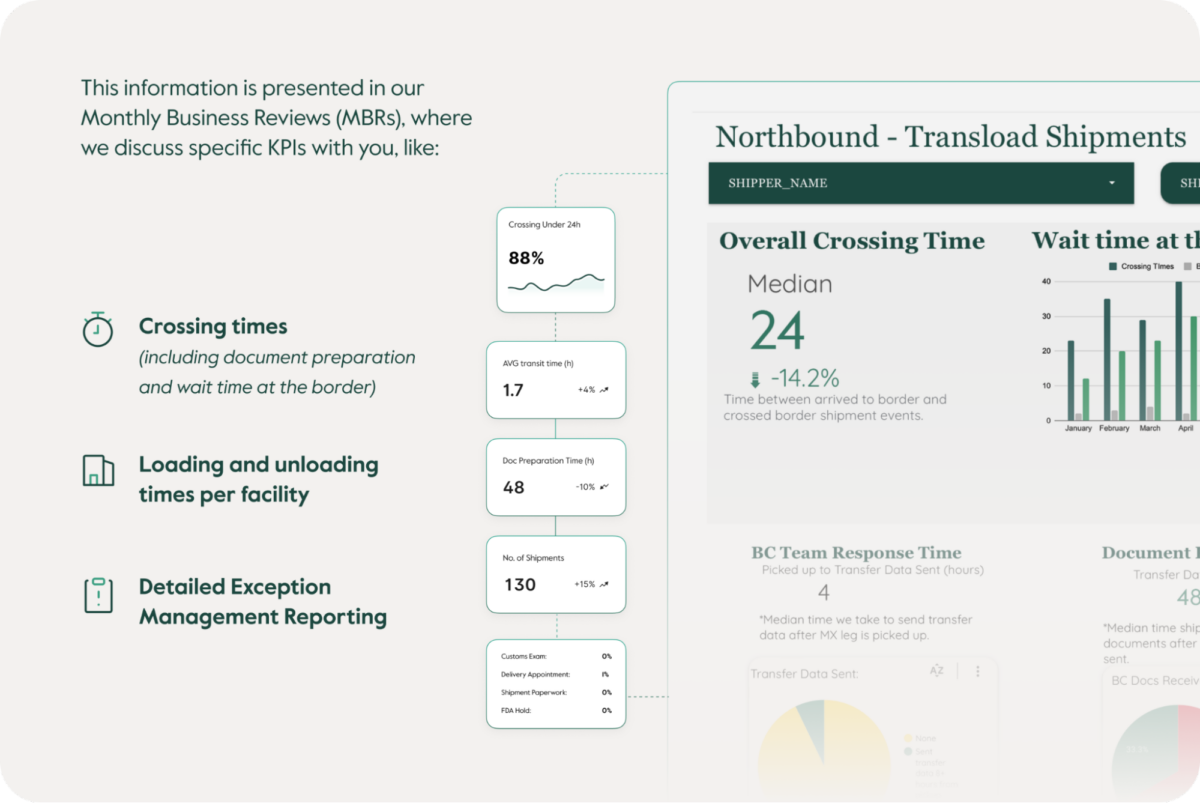
The supply chain ripples caused by pandemic bottlenecks are being felt along the U.S.-Mexico border as nearshoring intensifies. Cross-border logistics continues to gain attention as large multinational corporations move their operations to Mexican border regions, creating additional demand for warehousing space, manufacturing facilities, transportation capacity and providers to manage shipments.
While creating warehouses and manufacturing centers is a straightforward process, finding and managing Mexican transportation capacity to service these locations is limited by visibility for available carriers and, if you find willing carriers, the inability to track their progress. Mexican trucking regulations do not require drivers to have ELDs. Drivers instead use either paper logs or a digital logbook to comply with hours-of-service regulations.
Compared to a U.S.-based carrier that can utilize third-party tracking or directly provide ELD telematics and location data to all parties, contacting Mexican carriers is often a low-tech affair.
“We look at this really deeply also with our product and engineering teams. There’s some providers in the U.S. that are getting a little better at Mexico … but the consensus is it’s not very good at the border and especially on the Mexican side. Visibility is really a challenge for most shippers. At Nuvocargo, we’re able to provide end-to-end visibility with a full-time monitoring team, through integrations with GPS providers, and by partnering with select carriers,” said Deepak Chhugani, founder and CEO of Nuvocargo.
Chhugani notes that for sending messages to drivers and carriers, social media messaging apps like WhatsApp remain a fixture for most Latin American emerging markets, with tracking updates and load communication routed through those apps.
“You typically have WhatsApp groups with your carriers, with 3PLs, with some of the border service providers. We’ve built technology integrating with the key players in the ecosystem so you can streamline, centralize, and measure those communications.”
Danny Gordon, head of account management at Nuvocargo, said, “You have to have relationships with those carriers. It’s a very specialized network, and it’s especially important to be an expert on the compliance side, sourcing carriers with the best safety measures that adhere to Customs-Trade Partnership Against Terrorism (CTPAT) regulations.” Gordon notes in Mexico there is no large carrier loadboard or repository where brokers can start dialing a list of hundreds of carriers to source for a load.
He adds: “The last thing you can do when you’re doing Mexico is find one truck carrier you’ve never talked to or met and trust them to take that business. That’s a recipe for disaster. It takes a lot of work to develop a specialized network of trustworthy, high-service-level carriers.”
To tackle these operational and visibility challenges, Nuvocargo is pairing technology with singular expertise in this trade lane to disrupt the status quo. Gordon explains that many legacy providers approach the cross-border market like they would a traditional U.S. market where cold calling and brute force carrier discovery can create market share. Operating at a higher level requires additional considerations, like the documents required, the languages required for a specific facility to book appointments, or even routing considerations within Mexico that take into account infrastructure and safety requirements.
For Chhugani, Nuvocargo’s in-house technology addresses a major blind spot in traditional transportation management systems, which are not designed to handle the added business logic that cross-border operations require. He noted that added complexity comes from the additional variables, like whether it’s a northbound or a southbound shipment, how many legs the shipment has, whether there is a drop at the border or final destination, and whether the paperwork is prepared or a shipper or customs broker needs to provide additional documents before reaching customs at the border.

For Nuvocargo, the focus on in-house technology is paying off by reducing border crossing times. The company notes a 66% faster document turnaround time and 33% faster border crossings when Nuvocargo handles freight and customs. For the carriers that haul the cross-border, Nuvocargo reported a 43% faster approval process for on-time payments. Nuvocargo has been partnering successfully with US shippers to enter and expand into the Mexican market, seeing very strong momentum. The company now handles all cross-border logistics for a growing number of U.S. shippers.
As nearshoring efforts intensify, the number of trucks that cross the U.S.-Mexico border each day is expected to soar from the current total of nearly 35,000 in the coming years. For shippers and logistics providers, this growth is upending expectations for service and visibility and requires a tailored approach compared to the current opaque process that plagues cross-border freight.
To learn more, visit www.nuvocargo.com










